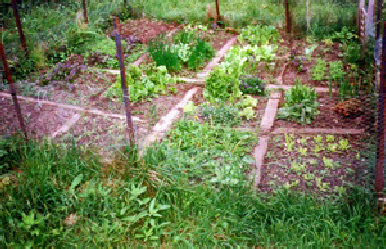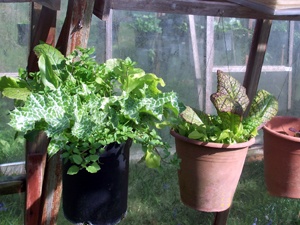There are two main approaches to keeping the large and increasing number of plants supplied with nutrients.
The cycling of plant materials
Returning plant wastes to the soil where they grow, as in the natural forest, or accelerating the decomposition of green waste through the agency of the compost bin.
Establishing a nutritional superhighway within the soil
98% of plants will link up with a fungal network within the soil if left undisturbed and this network will supply the nutrients that have been broken down by the millions of soil organisms acting on the regular supply of plant wastes at the surface. This process can be enhanced by incorporating nitrogen fixing plants in the plantings. Eleagnus, buckthorn and broom are used in the forest garden at tree and shrub level and clover and vetches at ground level.
Those with little or no land
For those with little or no land and who are attempting to maintain the recommended 5 portions of fruit and veg per day the compost arising from the green waste could be very effectively cycled by one of two very efficient growing systems which I have used and continue to make use of in a part of the forest garden where protection can be provided.
“ Square foot gardening”
This is a well attested system of growing crops devised by an American Mel Bartholomew and provides an annual programme of cropping based on 1ft squares. The system takes only one fifth the space and time of a conventional plot based on rows of vegetables.
|
The illustration shows a plot I established some years ago using a grid system rather than rows and employing the spacings that the author had carefully worked out for a whole range of vegetables, including climbers, across the year. Although I no longer use the system I found it to be most successful. SEE IMPROVED VERSION ON NEXT PAGE
|

All manner of containers can be used to grow plants. I have adapted the system to grow the more tender vegetables away from the slugs and snails hanging the pots by picture wire and cycling compost direct from the compost bin. Seeds from previous generations of plants are either weeded out, encouraged to provide a multi salad crop as shown, replanted in another plot or returned to the compost bin.
Container gardening
|
Because the soil base of the garden is wind blown sea sand it attracts a large population of snails and the hanging containers is one of the most successful ways I have tried for keeping them away from the more tender salad plants. Picture wire is used to hang the pots which are suspended in the greenhouses.
|

* Square foot Gardening by Mel Bartholomew -

















